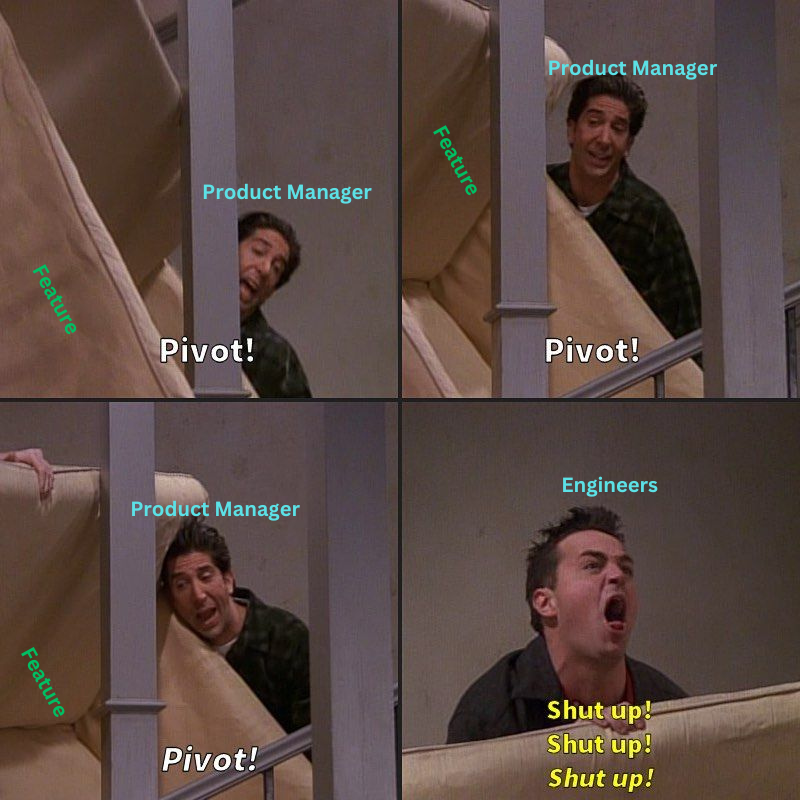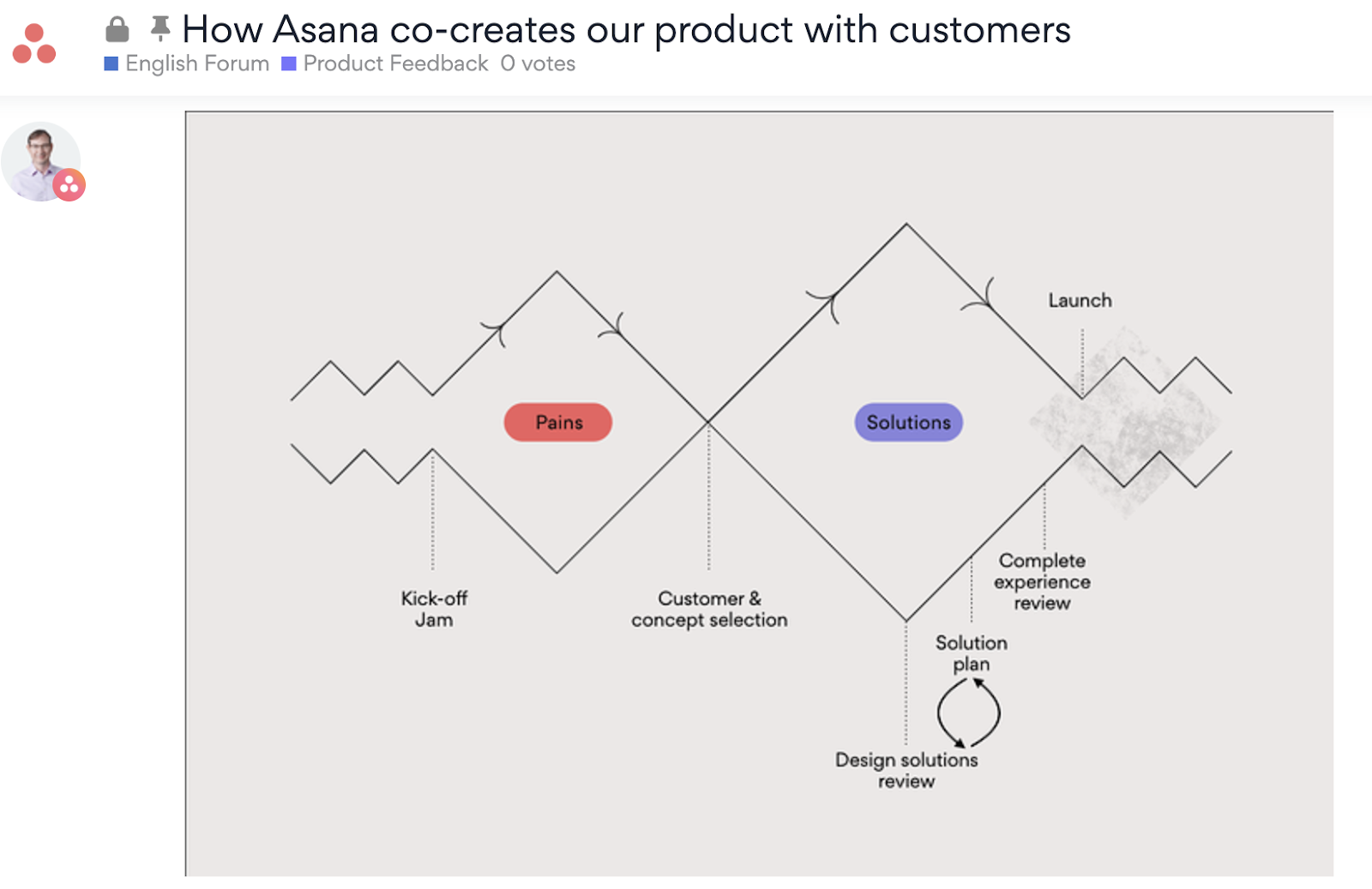Ever wonder how Zoom became more popular than Skype or Cisco Webex? Zoom won by working closely with their customers. From the start, they wanted to make their product easy to use and less frustrating. Their goal was to “deliver happiness.”
And it worked.
The fantastic growth we’re experiencing and the many industry accolades we’ve received can all be attributed to having satisfied customers that enjoy using our platform.
Eric Yuan, Founder and CEO, Zoom
Zoom listened to their customers and worked with them to improve the product.
This helped them build a customer-focused product. It also turned customers into evangelists. Even people using Zoom for free told others about it.
In 2021, Zoom grew by 326%, due in large part to strong customer co-creation practices. This means not just listening to customers but actively working with them to make products they really love.
Let’s look at how that works.
Understanding customer co-creation
Knowing how to use your customers’ feedback can help you build better products. Actually building products and features in response to feedback requires going beyond just listening.
Co-creation isn’t just listening; it’s seeking input and ideas from your users. By going deeper, you’ll find the pain points behind their feedback. Customers can help you pick what’s important. They’ll also help you design the solutions that work for them.
At Canny, we built a feedback management tool for PMs to actively involve users in the product development process. It goes beyond just collecting feedback. Your team can see who left you feedback. You can discuss feedback with users to uncover pain points. This makes it easy to find customers to co-create with.
Users can also discuss feedback with each other and foster a community.
As you work on their feedback, Canny keeps users updated automatically. PMs can then show progress directly on the roadmap.
Mariah Hay, CEO of Allboarder and former Chief Experience Officer at Help Scout, shared her thoughts on co-creation with us. She approaches co-creation using design thinking and lean approaches (more on these later).
Design thinking involves deep empathy with customers, ideation, and testing, while lean principles focus on rapid iteration based on user feedback. Co-creation sessions can take the form of collaborative workshops, user feedback loops, and even hackathons, where customers are invited to directly influence the product design and features.
Mariah Hay, CEO of Allboarder
Instead of just answering when you can, you can find your most important users and ask, “What should we build to help you?” Then, you can co-create with them to build features that solve real user needs.
Benefits of customer co-creation
Who doesn’t love to experience a little bit of “wow, they actually listened to me” with their feedback? Wouldn’t it be better if your users were as excited as you are about what you’re building?
Co-creation can deliver that, and a lot more.
Customer co-creation can increase product adoption
Co-creation is a proactive two-way communication channel between users and product teams.
With co-creation, you’re brainstorming and testing features with your users in real-time. Now you’re not just figuring out what they want, but why they want it. And the payoff is real. Alfred Christ is a Product Manager at Robotime. He believes customer co-creation helped him diversify their offerings and increase sales.
Co-creation is a two-way thing where mutual respect and collaboration are important. It allows us to tap into the users’ creativity and they get to see their contributions come alive in our products.
Alfred Christ, Product Manager at Robotime
Involving customers in this process makes them feel more invested. That leads to better engagement and adoption.
Co-creation helps you innovate without breaking the budget

No one wants to hear “pivot!” after a year and hundreds of thousands of dollars into development. That’s where co-creation can save the day and the budget. By involving your customers early, you can dodge those expensive “whoops, we built the wrong thing” moments later on.
Use co-creation to design features your customers agree will solve their problems.
It might feel like you’re building a product in public by letting customers take a look under the hood. But if it keeps you from blowing the budget on last-minute changes, a little extra work with customers is worth the effort. Plus, fewer sleepless nights before launch day.
There are also a lot of other benefits to building in public.
Co-creation gives you good ideas right away
Co-creation is a smart way to get ideas from the people who use your product. Instead of spending a lot on research, you can ask your customers what they think. They can give you real feedback from their own experiences.
And the best part? This way, you can stay on track, and your customers will be happy.
Co-creation gives you free, real-time insights
Co-creation is also a budget-friendly way to get ongoing insights from your ideal customer profile. Why spend extra time and money on focus groups or market research when you can get feedback straight from the source? Your users are an always-on, built-in resource. They offer real, actionable ideas grounded in their daily experiences with your product.
And the best part? This real-time feedback loop means you’re always one step ahead––or at least trying to be. And your customers can see and appreciate that effort.
Customer co-creation models and frameworks
You know what customer co-creation is and how it helps you build features aligned with your users. Now, let’s dive into customer co-creation models and frameworks you can use.
1. Crowdsourcing
Crowdsourcing is basically getting a lot of ideas from a big group of people, usually through an online platform. You then let them vote on the ideas and discuss them before you even say the words feature sprint planning.
A good example is ClickUp. As they grew, they had trouble keeping track of all their feedback. So, they used Canny to help. Canny makes it easy for users to share ideas with just a few clicks. ClickUp’s team can also add ideas for their customers. Canny helps deduplicate feedback and lets users vote on existing ideas. This helps surface the most popular ideas and feedback.

Since using Canny, over 3,500 ClickUp users have shared their thoughts more than 30,000 times. This helps ClickUp improve features and make the product easier to use. Canny helps ClickUp listen to customers and make changes. Users, in turn, feel happy because their ideas matter.
Don’t underestimate the power of the communities that form around product feedback. Hive is a Canny customer customer and a company “proudly built by users.” They grew a community organically by giving customers a platform to interact with each other about using the product.
Our users started to comment and help each other out in Canny. For example, someone will post about an issue, and someone else will comment and suggest a workaround or a resolution. Seeing a community fostering within Canny is beautiful.
Kelley Bunge, Director of Product at Hive
Having a community behind you to help you co-create is hugely beneficial.
2. Customer Advisory Boards (CABs)
If you want to focus on feedback by specific groups of customers, you can use a Customer Advisory Board (CAB).
CABs are made of users who commit to an ongoing partnership with your company to give you feedback. Sometimes you have to pay them, but not always. Advisory boards give you a more intimate and focused collaboration with those users.
Slack effectively used this approach during a major redesign. They first assembled a team to create prototypes. 100 pilot users joined a shared Slack channel to share real-time feedback on prototypes. This CAB-like environment allowed Slack to quickly refine their designs based on direct user insights. For example, they learned it was important to display member counts in channels.

3. Design thinking workshops
If you’re looking for a more hands-on, interactive way to co-create, design thinking workshops might be for you. This approach brings together customers and your team in workshops to brainstorm, prototype, and test new ideas.
Design thinking workshops involve defining user problems by understanding their needs. You brainstorm a list of potential solutions and create prototypes to visualize ideas. Then, you gather feedback through testing.

Asana, for example, involves customers throughout their product development process. They integrate feedback from their Voice of Customer and Ambassador programs. This method includes actively engaging with their users to capture pain points and suggestions. Together they find solutions to these pain points. It reflects the Design Thinking principle of empathy and iterative design.
This creates a two-way street, building an engaged user base who feels heard, while providing a continuous stream of valuable customer insights. We then use these insights to power our product roadmap, from conception to launch, ensuring we always prioritize customer needs.
Alex Hood, Chief Product Officer at Asana
4. Innovation games
Innovation games are interactive playdates for your product ideas, basically. These games use structured activities to get your users involved in a fun, collaborative way. They’re great for sparking creativity and uncovering insights.
For example, the game “Buy a Feature” lets your users pay fake money for the features they want. There’s also “Speed Boat,” where participants see pain points as anchors holding the product back. These games give participants a playful context for users to express their needs and preferences.
Where to start: How to implement customer co-creation
If you have lots of ideas and want to involve customers in building them, co-creation can help. Here’s a quick guide to get started.
1. Figure out what you want to accomplish
Before diving into co-creation, figure out what you want to do with the feedback first. Let’s say it’s improving a feature. You’d set a goal to find pain points or suggestions for that feature. Then, find KPIs you’ll use to measure success, like increasing adoption or reducing user-reported issues.
2. Figure out who needs to be involved
To make co-creation work well, you need to get the right people together. Then you can start brainstorming. First, talk to your product, design, sales, and software teams. Then, find out who else should join based on those conversations.
If you’ve been managing a feedback board like Canny, you can see which users left specific feedback. You can then invite those users to join the co-creation process. This gives you an organized way to develop new ideas.
3. Craft a thoughtful communication plan
Tell everyone what the goals are and how their ideas will help make the product better. Keep talking to them—don’t just send one update. You can use newsletters, blog posts, or anything that works. Just keep it regular so they can see their ideas are helping.
If you use a tool like Canny, customers can see updates as you work on their feedback. Product managers can share updates, and customers can see changes.
4. Choose the right tools for the job
Customer co-creation tools separate the novice co-creator from the effective one. The right set of tools can help you turn user feedback into insights you can build for.
- Community platforms: Discord, Slack, Reddit. These are virtual, free places where you and your users can chat, share ideas, and give feedback in real-time. It’s an interactive way to keep the conversation flowing and make sure your users feel involved.
- Idea management system: Tools like Canny let users share their ideas, vote on their favorites, and track their progress. These tools can turn feedback into a fun and engaging process for everyone involved. You can also plug these tools right into your product or website. This lets your users easily dive into the idea pipeline without skipping a beat.
- Design collaboration: Mariah Hay shared why these tools are so important. “Tools like Miro and Figma are fantastic for real-time collaboration, allowing customers to leave comments directly on design mockups or even co-design elements.”
These are just a few examples. Any tools that help you and your customers collaborate can support co-creation.
Whether you use feedback for your external customers or internal teams, Canny builds a bridge for you. And that’s extremely important for building high quality products.
–Ida Ström, Senior Product Designer, Mercury
The future of building products is co-creative
Embracing customer co-creation is more than just a trend; it’s a strategy for long-term success. By actively involving your customers, you’ll:
- Innovate faster
- Meet user needs more effectively
- Differentiate your product in a competitive market
CircleCI, a Canny customer, saw a big impact when their product managers started interacting with customers more. It created a stronger connection between product and user.
[The product managers are] really able to go in and own that experience with their users. It’s definitely driven a lot of their product decisions.
– Lily Ai, Product Operations Manager at CircleCI
Think of co-creation not just as a way to build stickier products but as a pathway to deeper, more meaningful relationships with your users. By prioritizing collaboration, you’re not just developing features; you’re creating a community that feels valued and heard.







